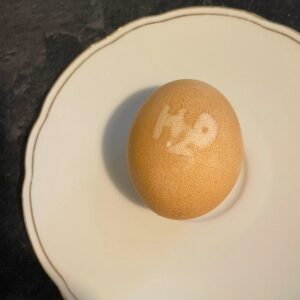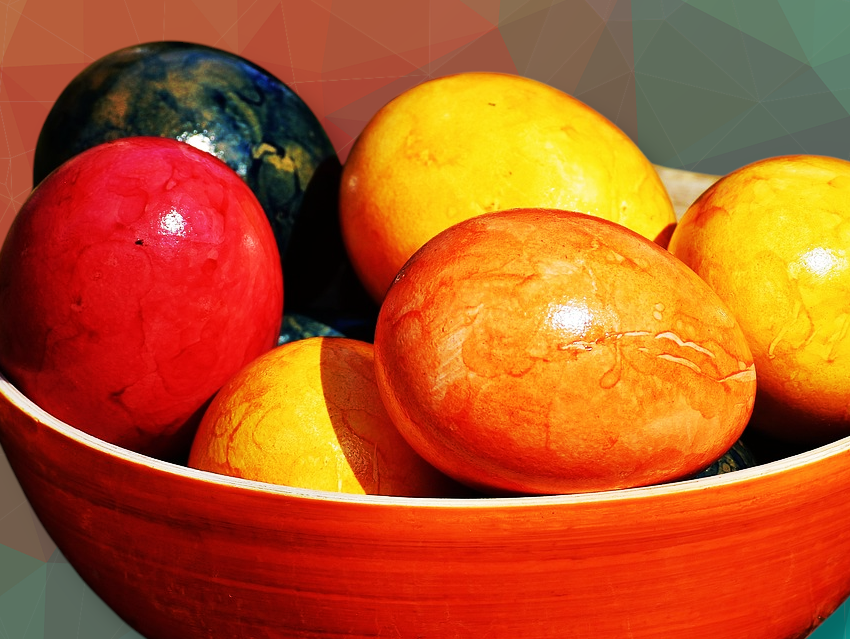Coloring eggs is a much-loved Easter tradition. Instead of synthetic dyes, you can easily color eggs using natural foods like vegetables, spices, and herbs.
🧪 Prepare a Dye Bath
🥕 Vegetables: Chop 500 g, simmer in 2 L water for 30–40 min
🌸 Berries, leaves, or flowers: Soak 30–100 g in 2 L water for 2 h, then simmer 30–60 min
☕ Tea or coffee: Simmer 30–50 g in 2 L water for 20–30 min
The materials can also be combined.
🧂 Dyeing
🔸 Place pre-boiled eggs in the dye bath and let them soak for several hours
🧅 When using onion skins: Place raw eggs in the cooled dye bath, then bring to a boil and cook eggs for 10 minutes; alternatively, wrap onion skins around an egg, secure them with a cloth, and then boil the egg.
⚗️ The dyes do not adhere to the eggshell due to electrical charge, but rather because of its porous structure. They penetrate the tiny cavities and may even reach the interior. Organic compounds naturally present in the shell help the color bind effectively. In contrast, metal salt solutions and acids appear to erode the shell and reduce color intensity.
✨ Finishing Touch
- Rub eggs with a little cooking oil for a glossy shine
🌈 Ideas for Colors
🔴 Beetroot (red betanin), red cabbage (antocyanins), blackcurrants
🟡 Turmeric (curcumin), chamomile (apigenin), curcuma (curcumin)
🟢 Spinach (chlorophyll), parsley (chlorophyll), mate tea
🔵 Blueberries (anthocyanins), cabbage (antocyanins), blue mallow
🟤 Coffee (tannins), black tea (tannins), onion skins (quercetin)
The bluish-purple color produced by red cabbage can be transformed into green, yellow, or red using a baking soda solution or lemon juice (or household vinegar), allowing you to create beautiful patterns.
🥚 Tips
- Use white eggs for brighter results
- Warm eggs absorb the color more effectively
- Attach or tie small objects (e.g., grass, leaves, flowers, herbs, or shapes cut from tape or fabric) to the egg with a nylon stocking before dyeing to create areas that absorb little or no color, resulting in decorative patterns
- Hard-boiled eggs can be stored in the refrigerator for about two weeks, but only a few days at room temperature


Figure 1. The egg on the left was boiled in a broth of onion skins; the egg on the right is wrapped in a nylon stocking to hold objects in place and create a pattern, similar to the one in the left picture.
Also of Interest

Collection: Using Eggs to Explore the World of Chemistry
🐣🌷🐰 A growing collection of articles and videos on eggs and science





